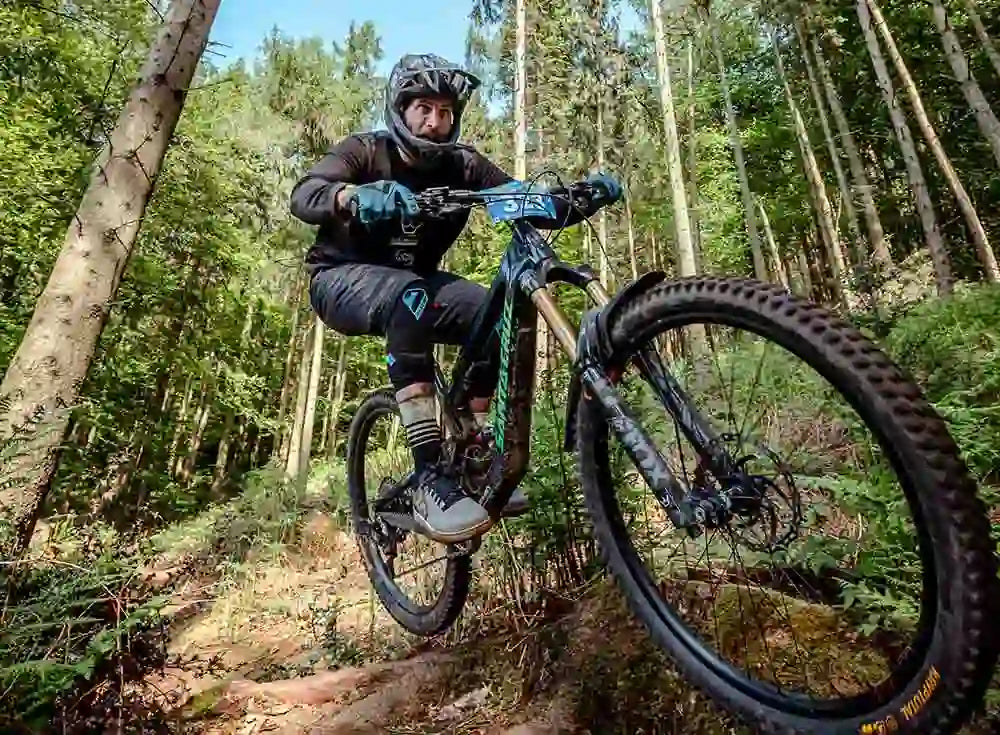
How to Bleed Your Hope Hydraulic Disc Brakes: A Step-by-Step Guide
Share
Hope hydraulic disc brakes are renowned for their power, durability, and reliability. To ensure they perform at their best, regular maintenance is necessary, and one of the most important tasks is bleeding the brakes. This is particularly essential when air bubbles become trapped in the brake lines, causing a soft or unresponsive brake lever.
This guide focuses on bleeding Hope brakes, including the Race, Race EVO, Tech 3, Tech EVO, and Tech 4 models, ensuring your braking system stays responsive and powerful.
Tools You'll Need:
- Bleed Kit (For Race, Race EVO, Tech 3, Tech EVO, and Tech 4)
- Bleed Kit
- Bleed Kit (Check compatibility: Race/Race EVO, – Tech 3, HTT0012 – Tech/Tech EVO, – Tech 4)
- Bleed Nipple
- 0.5m Clear Pipe
- Optional: 250mL bottle of DOT 5.1 brake fluid (DOT 4 is also acceptable for Hope brakes)
Preparation Before Bleeding
- Protect your bike: Wrap a tissue or rag around the master cylinder of your Hope brake system to prevent any brake fluid spillage, which could damage your bike’s paint.
- Remove the existing lid: Detach the diaphragm from the brake’s master cylinder.
- Attach the bleed kit: Install the compatible bleed kit lid for your Hope brake model (Race/Race EVO, Tech 3, Tech EVO, or Tech 4) and attach the funnel with the plug inserted.
- Fill the funnel: Add DOT 5.1 brake fluid into the funnel from a clean container (DOT 4 is also acceptable for Hope brakes).
- Attach the bleed nipple adapter: Place it on the bleed nipple of the brake caliper and route the clear pipe to a waste container.
Bleeding Procedure
- Remove the plug: Allow brake fluid to flow into the master cylinder reservoir of your Hope brake system.
- Pull the brake lever: Pull the lever until you feel resistance or it goes all the way to the handlebar.
- Open the bleed nipple: While holding the brake lever, open the bleed nipple slightly to release any air or fluid. Close the nipple after fluid or air escapes and then release the lever.
- Repeat the steps: Continue steps 2 and 3 until the brake fluid flowing through the waste pipe is clean and free of air bubbles, and the brake lever feels firm.
- Monitor fluid levels: Ensure there is always enough brake fluid in the funnel to avoid introducing more air into the system.
Finalising the Bleed
- Reinstall the plug: Once the brake lever feels solid, insert the plug back into the funnel.
- Close the bleed nipple: Tighten the bleed nipple securely, but do not overtighten.
- Remove the funnel: Unscrew the bleed kit lid and remove the funnel while keeping the plug in place.
- Check the fluid level: Push the pistons back into their housing and top up the brake fluid if necessary. Replace the intact diaphragm.
- Clean up: Wipe away any brake fluid spillage and dispose of the old brake fluid at a recycling center.
Additional Tips:
- Always wear latex gloves and protective glasses when handling brake fluid, as it can be harmful to your skin and eyes.
- DOT brake fluid is corrosive to paint, so clean any spillage immediately.
- If the bleed nipple is in a tricky position (especially on the rear caliper), consider removing the caliper from the frame to ensure no air gets trapped inside.
- Never pour brake fluid down the drain as it is harmful to the environment. Always dispose of it at a recycling center.
Regularly bleeding your Hope hydraulic brakes—whether they’re the Race, Race EVO, Tech 3, Tech EVO, or Tech 4 model—will ensure optimal performance on the road or trail. By following this guide, you’ll maintain a smooth and responsive brake system.
Need to replace your brake pads? Check out our high-quality Hope brake pads. For those looking for top-tier performance, don't miss our new Factory Racing Disc Brake Compounds specifically designed for Hope brakes.
Don’t forget to upgrade your setup with Titanium Retaining Bolts for better durability and corrosion resistance.
Ready to get started? Grab your bleed kits and brake fluid from our store today! Alternatively, check out our bicycle brake pad replacement.